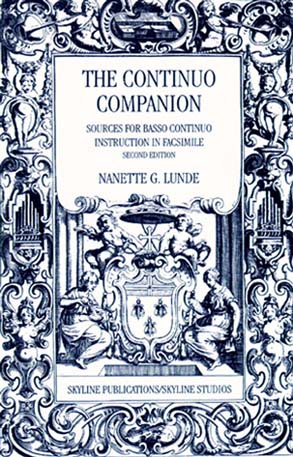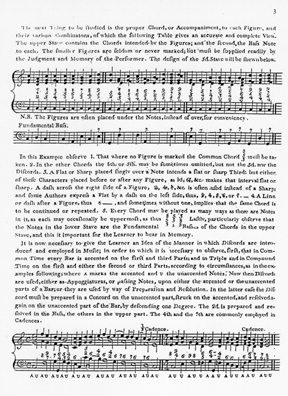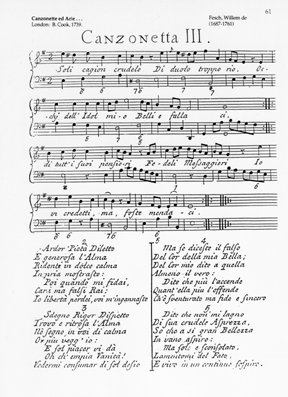The Continuo Companion, 2nd Edition
by Nanette G.Lunde
ISBN-13 978-0-9790360-0-2
As interest in historically-informed performance encourages more and more keyboard players to learn to play from a figured bass, it seems appropriate to provide a “Companion” of original source material in facsimile from which they may practice. Flutists, violinists, oboists, cellists/gambists, and singers will also find this to be a “Companion,” providing material for study, practice, and performance.
Basso continuo players who wish to avoid the either too-sparse or too-opulent realizations found in many modern editions and who value the spontaniety possible when reading from figures, turn to facsimiles of original prints and manuscripts whenever possible. The selections included here present a variety of printing and engraving styles, and various clefs and ornament signs. Several manuscript sources have also been reproduced, giving the student the opportunity to confront a “new look” to the page for almost every work.
This collection is intended to be used along with formal instruction in the theoretical and stylistic aspects of performing basso continuo.
It may also be used in conjunction with an instruction manual such as Figured Bass Accompaniment, Vol. I-II by Peter Williams, Edinburgh, 1982. The material is arranged in three sections. Part One presents selected exercises in graded order of difficulty taken from eighteenth- and nineteenth-century thorough-bass methods. Most of the examples consist of a bass line and figures only, such as are found in orchestral and ensemble parts for basso continuo. The first item, “Thorough-Bass at One View,” is an anonymous eighteenth-century guide of three pages which sets forth the rules for realizing figures.

Next, literature in varying styles is arranged in graded order of difficulty in Part Two. Included are scores of instrumental and vocal works and trio sonatas as well as individual bass parts for ensemble pieces. The latter are followed by the parts for the solo instruments so that the realizations may be worked out and performed in ensemble. These parts may be photocopied for study and performance. Part Two begins with simple folk-tunes accompanied by root position and first-inversion chords primarily. (It should be noted that for practice the solo line[s] may be performed by various instruments or voice or even by another keyboard instrument.) Chords of the seventh, both in root position and in inversion, and suspensions are increasingly found as one proceeds through the material. Music of England, France, Germany and Italy is included. Some quite well-known works have been inserted among many lesser-known pieces. Examples of unfigured basses from the literature conclude the collection in Part Three.
New in the present edition are works by John Blow, François Couperin, Isabella Leonarda, Marin Marais, Alessandro Scarlatti, Barbara Strozzi and others. They replace a like number of compositions from the first edition. The collection now gives a more complete overview of early, middle and late baroque compositions with basso continuo and provides the student an opportunity to “face the music,” both printed and handwitten, in various styles.

